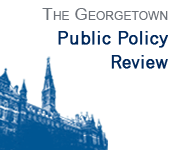by Monica Martinez
Public transportation is making a comeback. Between 2007 and 2008, public transportation ridership increased by about 4 percent, according to data released in the spring by the American Public Transportation Association (APTA), bringing the number of riders to the highest levels in five decades. The news was particularly surprising since nearly 60 percent of riders commute to work on public transportation, and falling gas prices and increasingly bleak employment figures would generally lower the number of commuters who use public transportation.
Nearly all forms of public transportation showed increases, with light rail (i.e., streetcars and trolleys) and bus ridership leading the way. Unexpectedly, the list of cities showing increases in ridership did not include only relatively-densely populated urban centers with well-established public transportation systems, such as New York, Chicago, or Washington, DC. Cities such as Dallas, Pompano Beach, FL, and Memphis posted some of the biggest increases, while ridership in bus systems serving less than 100,000 riders increased by nearly 10 percent, even as cities only expanded service by an average of 4 percent.
Despite the increase in ridership, the outlook is not rosy for public transportation. The encouraging announcement of increases in ridership comes amidst news of budget shortfalls that are affecting almost every public transportation system in the nation and that are forcing state and local governments to slash services and raise fares. It seems incongruous that as ridership is increasing, revenues are falling and many transport systems are in a precarious financial situation. Yet, fares account for between 20 and 50 percent of public transportation systems’ revenue streams, while state and local governments provide the additional funds. But the economic crisis has left many states and municipalities cash-strapped and unable to pour additional funds into or willing to cut the budgets of transit systems. According to APTA, 80 percent of public transit systems have seen decreases in funding from state or local governments, and 90 percent of the systems facing lower revenue streams have raised fares or cut routes. Public transit authorities in Chicago, New York, and Washington, DC, have approved fare increases and cut services over the past two years, and the Washington Metropolitan Area Transit Agency raised the possibility of another round of fare increases to meet predicted budget shortfalls.
Increasingly, however, political leaders and citizens are expressing the political—and financial—will to keep the nation’s public transportation systems financially viable, as well as to expand them. The economic stimulus package included approximately $8 billion for capital purchases and for expenditures on green transportation technologies. Congress also voted to allow transit agencies to use up to 10 percent of the stimulus package funds to finance operations and meet budget shortfalls. At the same time, voters in localities in Colorado, Michigan, and Maine approved transit initiatives that increased or maintained taxes aimed to support or expand public transit systems, and voters in Ohio defeated an anti-public transportation measure. APTA President William Millar greeted the events as an unambiguous victory for public transportation. “At a time when unemployment is high and economic uncertainty is foremost in people’s minds, you might not expect people to tax themselves for better public transit services,” Millar stated in an APTA press release. “The fact that a majority of transit-related ballot initiatives passed means that people recognize the value of public transportation.” (American Public Transportation Association 2009)
Despite the political and ballot-box victories public transportation has scored this year, some commentators remain pessimistic that most American communities will ever count on the efficient public transit systems that inexpensively and reliably transport commuters and residents in European cities. Matthew Bandyk recently published an article that pointed to that fact that driving continues to be a faster way to commute than taking public transportation. Bandyk mentioned that part of the explanation lies with our policy choices—namely the willingness to invest more in roads than in public transit. Although governments are showing an increasing interest in public transit, Los Angeles Times’ David Lazarus believes that expanding public transportation networks in the United States would require policy choices that our political leaders are unwilling to make. Making driving—especially parking—prohibitively expensive and creating more densely-populated urban areas would further increase ridership and allow state and local governments to invest more in public transit. But, Lazarus believes theses policy initiatives—and therefore larger, more efficient public transit systems—are dead-on-arrival.
American Public Transportation Association. “Voters Pass Pro-Transit Measures and Defeat Anti-Transit Measure.” http://www.apta.com/mediacenter/pressreleases/2009/Pages/091104_ballots.aspx
Email Monica Martinez at mvm35@georgetown.edu
Established in 1995, the Georgetown Public Policy Review is the McCourt School of Public Policy’s nonpartisan, graduate student-run publication. Our mission is to provide an outlet for innovative new thinkers and established policymakers to offer perspectives on the politics and policies that shape our nation and our world.
